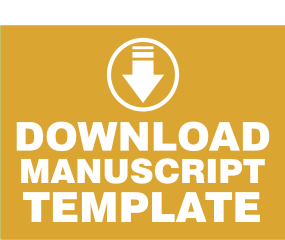DEBT OR EQUITY? Pespective Cooperation on Shipping Sector
DOI:
https://doi.org/10.30996/die.v10i02.3396Abstract
This study discusses corporate finance in order to enlarge the company's capacity.
There are two ways to finance this, namely by issuing debt securities and by selling some
shares to other parties or to the general public. Data is taken from 24 shipping companies
that provide transportation services listed on the Indonesia Stock Exchange through RTI
Business in the form of liabilities, equity, DER, ROA and ROE. To analyze the data used
descriptive analysis and correlation analysis techniques. Although the correlation
between DER and ROA gives positive results, it does not provide information on which
stocks are suitable for investors to choose in investing. When viewed from the value of
ROE, investors can choose companies that have ROE above 15% and a positive DER
value. In the research there are two shipping companies that have ROE above 15%,
namely HITS and TCPI. In choosing a source of corporate funding, management must be
careful. Debt that is too large compared to the ability to pay together with the interest is
very burdensome for the company. This can reduce the value of assets and inhibit the
increase in company equity.
If a company has very stable cash flow, it can use more debt than companies in
risky industries or very small companies that are just starting to operate. New businesses
with high uncertainties may have difficulty obtaining debt financing and better finance
their operations mostly through equity.
Keyword: debt, equity, DER, ROA, ROE.
Downloads
References
R. OKSAPUTRI, E. Ernawati, and A. Desi, “Implementasi Content Based Image Retrieval (Cbir) Pada Citra Batik Besurek Yang Tidak Utuh Menggunakan Metode Speeded Up Robust Features (Surf) Dan Fast Library Approximated Nearest Neighbor (Flann),†Pseudocode, vol. 5, no. 2, pp. 18–28, 2018.
A. S. Arwanda, “Content Based Image Retrieval Batik Tradisional Yogyakarta Dengan Ekstrasi Ciri Berdasarkan Tekstur Filter Gabor Wavelets 2D Skripsi Content Based Image Retrieval Dengan Ekstrasi Ciri Berdasarkan Tekstur Filter Gabor Wavelets 2D,†Ticom, vol. 1, no. 3, pp. 12–18, 2013.
A. Y. Wicaksono, N. Suciati, and D. Purwitasari, “Implementasi Transformasi Curvelet dan Ruang Warna HSV untuk Temu Kembali Citra Batik Berbasis Isi pada Situs Batik,†J. Tek. POMITS, vol. 2, no. 1, pp. 1–4, 2013.
F. A. Hermawati, “Sistem Temu Kembali Citra Berdasarkan Karakteristik Bentuk dengan Metode Color-Edge Extraction,†in Seminar Nasional Teknik 2009, 2009, pp. 253–257.
F. A. Hermawati, “Segmentasi Citra Berdasarkan Karakteristik Color-Texture,†KONVERGENSI, vol. 1, no. 1, pp. 1–8, 2005.
F. A. Hermawati, H. H. Tjandrasa, and N. Suciati, “Evaluasi Representasi Warna Untuk Retrieval Citra Berbasis Region,†J. Saintek, vol. 9, no. 2, pp. 101–107, 2005.
F. A. Hermawati, H. Tjandrasa, and N. Suciati, “Sistem Retrieval Citra Berbasis Region Dengan Transformasi Wavelet Berdasarkan Karakteristik Color-Texture,†KONVERGENSI, vol. 2, no. 1, pp. 1–9, 2006.
Y. MZ, E. Utami, and A. Amborowati, “Temu Kembali Citra Batik Pesisir,†J. Inf. Interaktif, vol. 2, no. 1, pp. 1–9, 2017.
M. Nasir, N. Suciati, and A. Y. Wijaya, “Kombinasi Fitur Tekstur Local Binary Pattern yang Invariant terhadap Rotasi dengan Fitur Warna Berbasis Ruang Warna HSV untuk Temu Kembali Citra Kain Tradisional,†J. Inspirat., vol. 7, no. 1, pp. 42–51, 2017.
Poland, Emerging Markets
Journal, Volume 5 No 2.
Debt Financing vs. Equity Financing:
What's the Difference? By
Christina Majaski dalam
m/ask/answers/05/debtchea
perthanequi-ty.asp
J. Scott Davis. 2014. The
Macroeconomic Effects of
Debt- and Equity-Based
Capital Inflows, Federal
Reserve Bank of Dallas
Globalization and Monetary
Policy Institute Working Paper
No. 214,
/media/documens/institute/
papers/2014/0214 .Pdf,
diakses 3 Desember 2019.
Terence Tai-Leung Chong, Daniel
Tak-Yan Law and Feng Yao.
The Debt-Equity Choice
of Japanese Firms,
International Journal of
Business and Society, Vol. 17
No. 2, 2016, 167-182.
Umer Iqbal, & Muhammad Usman.
Impact of Financial
Leverage on Firm
Performance, SEISENSE
Journal of Management, Vol. 1.
Issue 2.
Downloads
Published
Issue
Section
License
The author who will publish the manuscript at DiE: Jurnal Ilmu Ekonomi dan Manajemen, agree to the following terms:
1. Authors retain copyright and grant the journal right of first publication with the work simultaneously licensed under a Creative Commons Attribution ShareAlike License that allows others to share the work with an acknowledgment of the work's authorship and initial publication in this journal.
2. Authors are able to enter into separate, additional contractual arrangements for the non-exclusive distribution of the journal's published version of the work (e.g., post it to an institutional repository or publish it in a book), with an acknowledgment of its initial publication in this journal.
3. Authors are permitted and encouraged to post their work online (e.g., in institutional repositories, pre-prints sites or on their website) prior to and during the submission process, as it can lead to productive exchanges, as well as earlier and greater dissemination of published work








